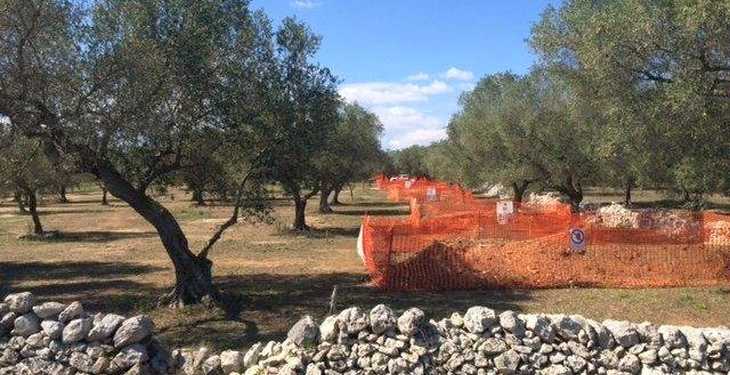Developers of a strategic pipeline bringing central Asian gas into Europe say they will start in a few days to remove an obstacle that threatened to delay the $40 billion project — an grove of olive trees dating back centuries in southern Italy.
The trees, including some more than 100 years’ old on a site used to farm olives for centuries, stand in the way of the Trans Adriatic Pipeline (TAP), the final stage of the so-called southern gas corridor which is meant to reduce the European Union’s dependence on Russian energy.
The TAP developers had hoped to begin moving the first of roughly 10,000 trees almost a year ago, but local opposition to shifting them slowed the process, shortening the construction timetable and jeopardising their goal to deliver first gas into Italy in 2020.
“We’re going to start moving the olives in a few days,” a TAP spokesman said on Tuesday, adding the developers had complied with regulations required before moving the trees.
The last requirements — a health check to ensure any sick trees are destroyed rather than moved — was now well underway by authorities in the region of Puglia, he said.
Some trees carry Xylella, a deadly bacteria that has wiped out tens of thousands of trees in recent years.
Any threat to old olive trees can stir strong emotions in Puglia, the country’s biggest producer of olive oil, where the regional governor has been lobbying for the pipeline to come ashore in an industrial area further north, away from the grove.
If the trees are not shifted by April, when they go through a six-month growth spurt and cannot be moved, the TAP consortium must wait until late November to complete the removals, according to Reuters.
Under the project plan, the trees are to be returned to their original positions once the pipes are laid and buried, a condition imposed by Rome when it approved TAP in 2015.
At a removal rate of 20 trees per day, the critical first batch of trees could take just over a week to clear.
TAP’s confidence in meeting its timetable has grown to a point where two investors, Enagas and Snam, decided this year to put the 2020 arrival date for gas in their long-term business plans, a source close to the matter said.
That contrasts to mid-December when TAP chief Ian Bradshaw voiced frustration at delays during a board meeting. He mooted the idea of rethinking the route, a remark aimed at stinging the Italian shareholders into action to help end the stalemate, said a source familiar with the deliberations.
Yet the project may face other obstacles.
Even if TAP can remove the olive trees by end-April, the project must meet a check-list of more than 30 other conditions, providing scope for fresh delays. These include measures to preserve the natural environment and wildlife habitats – on land and at sea.
Puglia governor Michele Emiliano has been lobbying Rome to shift the pipeline’s landing point, but he says the government was afraid this could prompt TAP to re-route away from Italy.
“The government is worried any change of landfall could persuade TAP to leave Italy and reroute through the Balkans,” Emiliano told Reuters.
Italy’s Industry Ministry said work had already begun and local administrative procedures to move the trees completed, declining to add any more.
The EU has also been concerned about the prospect of delays at the Italy end of the project.
“Time is running out. The landing point in Italy is still an issue,” an EU official said recently.
Italy lost another major energy project in Puglia in 2012 when Britain’s BG Group scrapped an LNG terminal it had already spent 250 million euros on, blaming red tape.
TAP’s shareholders, who also include BP, SOCAR, Fluxys, Enagas and Axpo, is the largest project aimed at bringing new supplies of gas to European consumers.
It is expected to carry around 10 billion cubic metres (bcm) per year of Azeri gas from the giant Shah Deniz II field to Italy and could be enlarged to 20 bcm.
